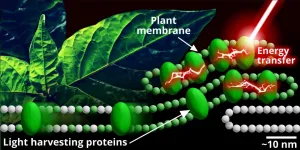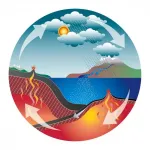Does your child have MIS-C, COVID-19 or Kawasaki disease?
A Rutgers pediatrician specializing in critical care discusses how to differentiate among multisystem inflammatory syndrome, acute COVID-19 and Kawasaki disease in children
2021-03-11
(Press-News.org) Exposure to SARS-Co-V2, the virus that causes COVID-19, can put otherwise healthy children and adolescents at risk for Multisystem Inflammatory Syndrome in Children (MIS-C), a rare but possibly life-threatening pediatric condition that can cause severe inflammation in organs like the heart, brain, lungs, kidneys and gastrointestinal system.
Diagnosing and treating MIS-C -- which has affected 2,600 children since May 2020 and is known to occur in children who have tested positive for SARS-Co-V2 or been exposed to someone with COVID-19 -- is difficult because respiratory and gastrointestinal symptoms can be similar to severe COVID-19. Other features of MIS-C are very similar to Kawasaki disease, which causes inflammation in blood vessels.
Steven Horwitz, assistant professor of pediatrics at Rutgers Robert Wood Johnson Medical School, and an author of a recently published study in The Journal of the American Medical Association, looked at 1,116 people under 21 hospitalized from March through October 2020 with symptoms that could have been caused by any of these disorders and compared their clinical and laboratory results to determine how to more accurately diagnose MIS-C.
What is MIS-C and why is it difficult to diagnose?
MIS-C is a new phenomenon in pediatrics. It occurs in association with SARS-CoV-2 infection, but the symptoms can be several weeks delayed in children who have COVID-19, the disease resulting from the virus, but who are asymptomatic. Complicating the diagnosis, MIS-C symptoms also are similar to those of Kawasaki disease, the leading cause of acquired heart disease in children.
Although the symptoms are similar, the potential complications, treatments and outcomes can be different. If we can distinguish these conditions better, it will improve treatment and follow-up care.
How is MIS-C similar to and different from severe COVID-19 and Kawasaki disease?
In general, children with MIS-C tend to get sicker than those with acute COVID-19 since more organs are involved. While children with acute COVID-19 can have respiratory and gastrointestinal symptoms directly related to the virus, MIS-C seems to be an inflammatory response to the infection that occurs several weeks later, and that can resemble COVID-19. In our study, 80 percent of the children with MIS-C and COVID-19 each had severe respiratory symptoms, but more children with MIS-C had multiple organ involvement including cardiac problems and mucus membrane conditions, such as rashes or redness in the eyes resulting in a similar presentation to patients with Kawasaki disease.
Compared with COVID-19 and Kawasaki disease, MIS-C is more likely to affect children who are Hispanic/Latino or Black; more likely to affect children who have no underlying conditions; and more likely to affect those between ages 6 and 12. It is more likely to cause gastrointestinal symptoms than Kawasaki disease.
Both Kawasaki disease and MIS-C affect boys more, but Kawasaki disease affects primarily those of East Asian descent and appears in younger children, around ages 2 and 3.
How will this study inform treatment?
What we learned will help refine how MIS-C is diagnosed and treated. For example, while children with COVID-19 or MIS-C could benefit from anti-inflammatory treatments like steroids, children with MIS-C could further benefit from other treatment options such as intravenous immune globulin. These patients should also follow up with a cardiologist to check for changes in heart function, cardiac arrhythmia or coronary artery disease.
What should parents know?
I have children, so I understand how nervous parents are about this new syndrome. If your child develops a multitude of symptoms such as persistent fevers, rash or seem unusually tired, have your child assessed by a medical professional to rule out MIS-C. While MIS-C is a serious condition, most children including those with severe cardiac symptoms usually recover within 30 days.
INFORMATION:
ELSE PRESS RELEASES FROM THIS DATE:
2021-03-11
Rare earth elements are the gold of the 21st century: rare and highly prized all over the world. Most known and economically viable sources of rare earths are located in China, where more than 80 percent of them are refined. This has resulted in a near monopoly situation, with China dominating international trade, particularly in heavy rare earths. Geologists and materials scientists at FAU have now discovered a new way of finding new and previously unknown deposits of rare earths, or rare earth metals, worldwide. They have published the findings of their study in the journal Geology.
Rare earth metals are irreplaceable for manufacturing advanced high-tech industrial products due to their luminescent and ...
2021-03-11
Conservationists who apply wing tags for identifying Cape Vultures--a species of African vulture that is vulnerable to extinction--are putting the birds' lives further at risk, a new movement ecology study has shown. Researchers from the Max Planck Institute of Animal Behavior in Germany and VulPro NPC in South Africa have demonstrated that Cape Vultures fitted with tags on their wings travelled shorter distances and flew slower than those fitted with bands around their legs. The research emphasises the importance of investigating the effects that tagging methods can have on the behaviour and conservation of species, prompting a shift towards the ...
2021-03-11
New scientific techniques are revealing the intricate role that proteins play in photosynthesis.
Despite being discovered almost 300 years ago, photosynthesis still holds many unanswered questions for science, particularly the way that proteins organise themselves to convert sunlight into chemical energy and at the same time, protect plants from too much sunlight.
Now a collaboration between researchers at the University of Leeds and Kobe University in Japan is developing a novel approach to the investigation of photosynthesis.
Using hybrid membranes that mimic natural plant membranes and advanced microscopes, they are opening photosynthesis to nanoscale investigation - the study of life at less than one billionth ...
2021-03-11
In snowy plovers, females have overcome traditional family stereotypes. They often abandon the family to begin a clutch with a new partner whereas the males continue to care for their young until they are independent. An international team led by scientists from the Max Planck Institute for Ornithology in Seewiesen, Germany, has now investigated the decision-making process that determines the duration of parental care by females. They found that offspring desertion often occurs either under poor environmental conditions, when chicks die despite being cared for by both parents, ...
2021-03-11
To highlight tumours in the body for cancer diagnosis, doctors can use tiny optical probes (nanoprobes) that light up when they attach to tumours. These nanoprobes allow doctors to detect the location, shape and size of cancers in the body.
Most nanoprobes are fluorescent; they absorb light of a specific colour, like blue and then emit back light of a different colour, like green. However, as tissues of the human body can emit light as well, distinguishing the nanoprobe light from the background light can be tough and could lead to the wrong interpretation.
Now, researchers at Imperial College London have developed new nanoprobes, named bioharmonophores and patented at Imperial, ...
2021-03-11
About 1.8 million envenoming snakebites occur around the world annually, killing about 94,000 people. In tropical areas, especially in Southeast Asia and Sub-Saharan Africa, snakebites are considered a major cause of death, especially among farmers who encounter snakes in their fields. In response, the World Health Organization has launched a strategic plan to reduce snakebites by 50% by 2030. An important basis for attaining this goal is expanding relevant scientific research.
An international research group, including researchers from Tel Aviv University, has recently created an innovative simulation model for predicting snakebites, based on an improved ...
2021-03-11
A rare disease first identified in 2020 is much more common than first thought, say researchers at the University of Leeds investigating its origins.
VEXAS syndrome is a serious inflammatory condition which develops in men over 50, causing them to become very sick and fatigued, and can be fatal. It was originally thought to be rare, but a new study has identified genetic mutations which indicate that the disease is actually much more common.
The researchers developed a genetic test to identify patients who may have the disease, and now want to screen more people showing symptoms to understand exactly how common it is.
VEXAS syndrome causes unexplained fevers, painful skin rashes and affects the bone ...
2021-03-11
The conditions on Earth are ideal for life. Most places on our planet are neither too hot nor too cold and offer liquid water. These and other requirements for life, however, delicately depend on the right composition of the atmosphere. Too little or too much of certain gases - like carbon dioxide - and Earth could become a ball of ice or turn into a pressure cooker. When scientists look for potentially habitable planets, a key component is therefore their atmosphere.
Sometimes, that atmosphere is primitive and largely consists of the gases that were around when the planet formed - as is the case for Jupiter and Saturn. On terrestrial planets like Mars, Venus or Earth, however, such primitive atmospheres are lost. Instead, their remaining atmospheres are strongly influenced ...
2021-03-11
COLUMBUS, Ohio - Electric stimulation may be able to help blood vessels carry white blood cells and oxygen to wounds, speeding healing, a new study suggests.
The study, published in the Royal Society of Chemistry journal Lab on a Chip, found that steady electrical stimulation generates increased permeability across blood vessels, providing new insight into the ways new blood vessels might grow.
The electrical stimulation provided a constant voltage with an accompanying electric current in the presence of fluid flow. The findings indicate that stimulation increases ...
2021-03-11
Grass pollen is a major outdoor allergen, responsible for widespread and costly respiratory conditions including allergic asthma and hay fever (rhinitis). Now, researchers re-porting in the journal Current Biology on March 11 suggest that environmental DNA could help to better understand which grasses are the worst offenders.
"These findings represent a first step towards changing and improving our understanding of the complex relationships between pollen and population health," said Benedict Wheeler of the University of Exeter, UK. "If confirmed and refined, this research could help to improve pollen forecasts and warnings in the future, supporting individual and community-level prevention strategies and management ...
LAST 30 PRESS RELEASES:
[Press-News.org] Does your child have MIS-C, COVID-19 or Kawasaki disease?
A Rutgers pediatrician specializing in critical care discusses how to differentiate among multisystem inflammatory syndrome, acute COVID-19 and Kawasaki disease in children





